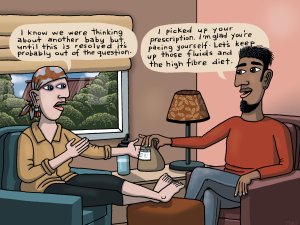Academic pharmacist Nataly Martini highlights the importance of understanding non-Hodgkin lymphoma and pharmacists’ roles in managing this condition
ESR data shows record number of syphilis cases
ESR data shows record number of syphilis cases

Key points
-
There has been an increase of 45 per cent in the number of syphilis cases recorded in New Zealand in 2023.
-
Around 40 per cent of infected babies are stillborn or die soon after birth due to congenital syphilis.
-
Strategies to reduce the spread of syphilis include more testing of antenatal women, contact tracing and safe-sex messaging.
“Syphilis will continue to spread unless we can increase testing to identify infections early, then provide treatment for cases and their sexual contacts”
New ESR data shows a record number of syphilis cases recorded in New Zealand in 2023 according to the New Zealand Sexual Health Society.
And the 736 cases recorded in the ESR’s annual surveillance report for sexually transmitted infections is up 45 per cent on 2022.
In a statement, New Zealand Sexual Health Society president Jeannie Oliphant says the disease is devastating for pregnant mothers, with around 40 per cent of infected babies stillborn or dying soon after birth due to congenital syphilis. Thirty-six per cent of the women diagnosed with the disease last year were pregnant.
“Syphilis will continue to spread unless we can increase testing to identify infections early, then provide treatment for cases and their sexual contacts to prevent onward transmission,” Dr Oliphant says. “This situation requires an urgent response and will need appropriate resourcing to prevent numbers continuing to increase.”
Syphilis can be treated and cured with antibiotics.
The first sign of the condition is often a sore or ulcer (called a chancre), which usually appears about three weeks after infection and can last between three and six weeks before it heals, with or without treatment. Someone who does not get treatment remains infectious.
Left untreated, the disease will progress to the next stage where symptoms include rashes, often with red or brownish spots on the palms of the hands and soles of the feet. Other symptoms include swollen lymph glands, fever, hair loss, muscle and joint aches, headaches, tiredness and warty growths in skin folds.
If it isn’t treated, a small number of people will get late-stage tertiary syphilis years after the initial infection, which can cause damage to the heart, brain, nerves, eye, blood vessels, liver, bones and joints.
Controlling the spread of the disease can be done through screening during antenatal care, coupled with contact tracing to diagnose and treat infected partners.
Last year, Te Whatu Ora Auckland Sexual Health Service outlined a potential strategy to test all women of fertile age for syphilis in Counties Manukau and west Auckland. In the minutes of a presentation by Dr Oliphant and Te Whatu Ora public health physician Subha Rajanaidu to the Metro Auckland Clinical Governance Forum in May last year, change was called for.
“The focus needs to move away from managing syphilis in the community to dramatically reducing numbers and eliminating congenital syphilis.”
Massimo Giola, infectious disease and sexual health physician, says the latest ESR figures are concerning, but don’t come as a total surprise to those in the sector.
“We knew we were seeing more and more cases in our clinics, and we knew syphilis numbers were going up.”
The ESR national surveillance report shows the national scale of the problem, Dr Giola, a member of the New Zealand Sexual Health Society executive committee, says. There is no specific resourcing for contact tracing, even though syphilis, along with gonorrhoea and HIV, is a notifiable STI, he says.
“Syphilis, along with all STIs, requires a multipronged prevention strategy.”
Such a strategy includes greater testing of pregnant women, contact tracing, coupled with other safe-sex messaging to encourage greater use of condoms, Dr Giola says.
“I think we need to take this more seriously as a society.”





